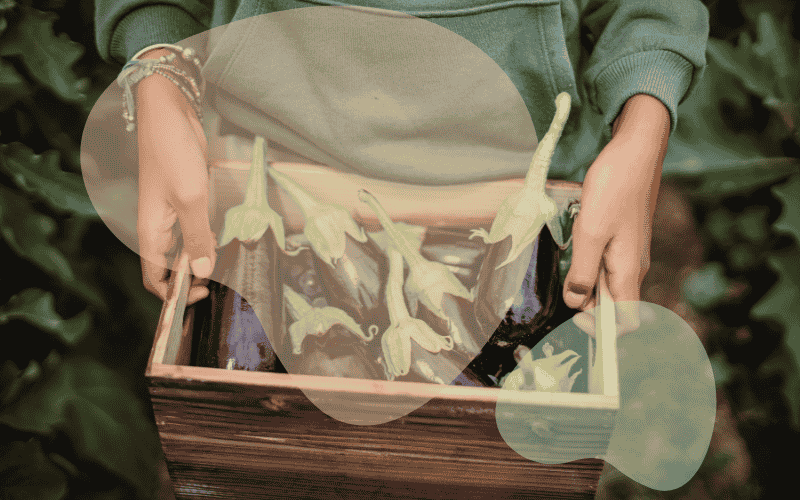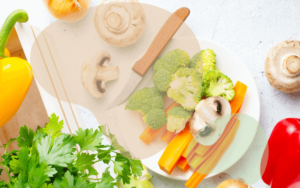Our blog is reader-supported. When you buy through links on our site, we may earn an affiliate commission.
August might seem late in the gardening year, but for cool-climate gardeners, with regions spanning the northern US (Zones 3-5) and most of Canada, this is prime planting time. As summer’s heat fades, late summer planting offers several major benefits: less heat stress on new seedlings, fewer insect pests, and perfect conditions for establishing robust fall crops. Cooler nights and shorter days can trigger sweeter root vegetables and heartier greens, resulting in harvests that often taste even better than their spring counterparts. August might feel like the tail end of the season, but it’s a great time to sow crops that love the cooler weather. From filling empty spots in your veggie bed to starting a fresh round for autumn and winter, there’s plenty you can plant now for a thriving garden ahead.
In cool climates, rapid-maturing greens, cold-hardy vegetables, fresh herbs, and a dazzling lineup of fall flowers can all be started now. This late summer planting guide is packed with regionally adapted advice and variety recommendations, so your garden can keep growing, right through the season’s very last frost. Let’s dig into what to plant in August for a flourishing, cool-climate home garden.
Vegetables for August Planting
Quick Growing Vegetables (4-6 weeks to harvest)
Take advantage of August’s warmth by sowing fast-growing vegetables that can mature before frosts arrive:
- Lettuce: Opt for quick and cold-tolerant types like Buttercrunch, Oak Leaf, or fresh, peppery Arugula. These provide delicious salads within a month.
- Spinach: Plant cold-hardy varieties such as Bloomsdale, which thrive in declining temperatures and sweeten with crisp air.
- Radishes: Choose Cherry Belle or French Breakfast for crunchy snacks in as little as 25 days. Successive sowings keep the harvest coming.
- Asian Greens: Bok choy, mizuna, and tatsoi all excel in cool, shortening days; tender leaves develop quickly and are less likely to bolt in late summer.
- Scallions/Green Onions: The Evergreen Hardy White variety stands up well to cool weather and overwinters in mild regions, ready for early spring picking.
Fall Harvest Vegetables (8-12 weeks to maturity)
These crops may take a bit longer, but planting by mid-August means you’ll enjoy nutritious meals well into fall:
- Kale: Varieties such as Winterbor, Red Russian, and Lacinato thrive in chillier air and remain harvestable after light frosts.
- Brussels Sprouts: For tiny, sweet cabbages in late autumn, transplant long-season types like Long Island Improved, best started indoors in July but can be transplanted out now in northern climates.
- Cabbage: Select reliable late varieties, such as January King, which withstand colder nights and can be harvested into November.
- Carrots: Sow Nantes or Chantenay for sweet, crisp roots as temperatures cool; mulch beds to prevent the soil from freezing and enjoy extended harvest.
- Beets: Detroit Dark Red or candy-striped Chioggia produce earthy roots and delicious greens. Late sowings are perfect for pickling and storage.
- Turnips: Purple Top White Globe matures quickly and delivers both nutritious roots and tender greens.
- Winter Squash: Butternut squash requires a longer growing window and full sun; only attempt if you have at least 90 frost-free days left, or start with well-established starts.
Herbs for August Planting
Late summer is ideal for starting several essential herbs that will thrive in cool climates:
- Parsley: Both flat-leaf and curly types germinate reliably in moist, cool soil. These biennials often return after winter thaws in milder years.
- Cilantro: Favor slow-bolt varieties to maximize your autumn harvest of fresh leaves. Cool nights prevent plants from bolting too quickly.
- Chives: Sow or transplant now for a perennial patch that will return earlier each spring and tolerate light frost.
- Sage: This hardy herb establishes best before autumn and overwinters well. Young plants will yield abundant leaves for stuffing and roasting by next year.
- Thyme: Both English and creeping varieties are winter-hardy. Give these perennial favorites a sunny, well-drained patch for strong root growth heading into winter.
Flowers for August Planting
Brighten up the fall and prepare your spring displays with these best bets:
Fall Blooming Annuals
- Pansies: Their cheerful faces bloom from late summer through the first snow, with many returning in early spring.
- Violas: Miniature relatives of pansies, violas are extremely cold-tolerant and flower for months, even under occasional frost.
- Calendulas: These easy to grow, frost-tolerant flowers bring vivid orange and yellow to beds, and their petals are edible, too!
- Sweet Alyssum: A favorite for fragrant, low-growing mats at the garden’s edge that endure light frosts.
- Snapdragons: Fall-flowering varieties offer rich color and height, and will sometimes overwinter in mild patches.
Perennials to Establish
- Mums (Chrysanthemums): For a burst of bold autumn color, plant hardy varieties this month to ensure strong roots before winter.
- Asters: Native cultivars bloom in late summer to fall, attracting pollinators and brightening up beds as other flowers fade.
- Sedum: Late-blooming “Autumn Joy” sedum adds rosy shades to the fall border and holds up even as frosts begin.
- Hardy Bulbs: Now’s the time to plant spring-flowering bulbs, daffodils, tulips, and crocus—so they can root over winter and erupt next April.
Regional Specific Tips
- Northern US (Zones 3-5): Focus on quick maturing crops and varieties labeled for short seasons. In cities like Duluth or Billings, prioritize frost-hardy greens and root crops. Use cold frames or row covers for season extension.
- Canada: With shorter growing seasons prevalent across much of the country, look for varieties bred for northern climates, such as “Northern Lights” kale or “Short’n Sweet” carrots. Raised beds improve drainage and warm up faster in cool autumns.
- UK/Scotland: Mild maritime winters mean you can grow winter lettuce, tatsoi, and chard almost year-round under protection. Stagger sowings for a continuous supply, and consider cloches for added warmth.
- Frost Dates & Protection: Know your region’s average first fall frost and count back maturity dates. Protect crops with row covers or low tunnels once nights dip toward freezing.
Planting Timeline & Care
- Early August: Focus on crops with longer maturity times, cabbage, beets, carrots, and kale. Start hardy annuals and perennials for ample establishment time.
- Late August: Shift to leafy greens, radishes, and herbs, anything with a short “days to harvest.” Direct sow as quick-growing annual flowers and establish overwintering herbs.
- Soil Preparation: Take advantage of warm soils for rapid seed germination. Add compost for fertility, and mulch around seedlings to lock in moisture as rains increase.
- Watering: Cooler nights reduce evaporation, but don’t let beds dry out. Consistent moisture improves both root veg sweetness and leafy green texture.
- Season Extension: Use lightweight row covers or garden fleece to push harvests further into late fall and protect from early, unexpected frosts.
August is a golden window for northern gardeners to sow with purpose, be it for crisp fall salads, vibrant spring blooms, or simply more time in the garden. With the right crops and a little planning, your cool climate garden can thrive well beyond the end of summer.




